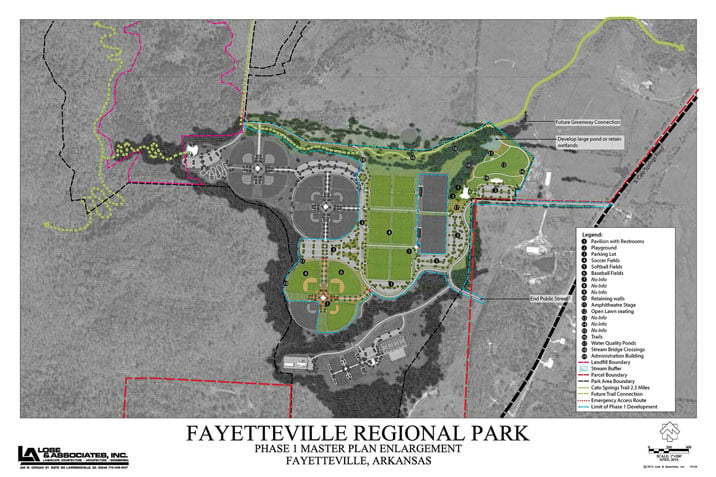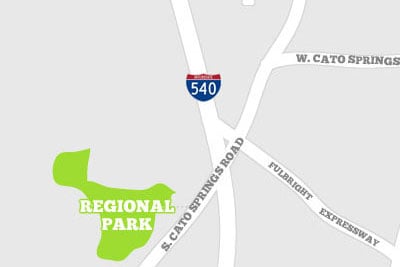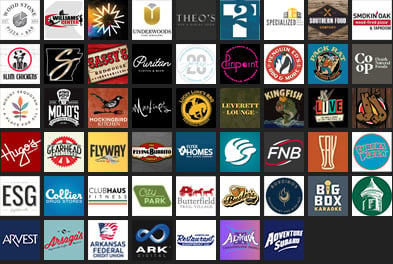History
The concept of a regional park was first discussed 13 years ago when the city commissioned a 10-year Master Plan to determine the recreation needs of Fayetteville citizens. The process, which also included a series of public meetings and a survey of citizens, found that residents wanted a city-wide network of trails, more neighborhood parks, preservation of open space and a regional park with a multi-sport complex.
By early 2002, the plan had been approved and adopted by the Parks and Recreation Advisory Board, the Planning Commission and eventually the Fayetteville City Council.
Site Selection
Parks officials said staff looked into 18 possible locations for a regional park beginning in December 2002. The list was eventually narrowed to four locations and by August 2003, the Parks and Recreation Advisory Board had determined the most suitable area was within the 800-acre Cummings property located four miles southwest of the downtown square near Interstate 540 off South Cato Springs Road.
Land Acquisition
SouthPass Development Company purchased the entire 800-acre site as part of a public-private partnership with the city. As part of the deal, the city agreed to annex the land and extend sewer service to the area where developers planned to build neighborhoods and shopping centers. In exchange, SouthPass agreed to give 200 acres to the city for a regional park.
The real estate project was never built, but Chambers Bank, which acquired the land in lieu of foreclosure, made good on the 200-acre donation to the city in late 2010.
Park Plans
The park will be built in several phases. Exactly what is included in each phase depends on how much funding is secured, but for the sake of breaking the plan into manageable pieces, parks staff have developed a general concept.
Phase one will include soccer fields, baseball diamonds, a “great lawn,” and general park infrastructure like streets, parking lots and utilities.
Soccer fields are first on the list because the city’s 1,500 youth soccer participants will need a place to play once the University of Arkansas reclaims its Lewis Park complex in 2018.
Other phases call for more baseball fields, basketball courts, softball fields, sand volleyball courts, a large pavilion, trails, and a playground.
A disc golf course, a community amphitheater and some type of water feature – like a splash pad – could follow.
Funding
The total cost of the regional park is estimated at $27.7 million. The city has about $4.5 million set aside for the project, and if voters agree to help fund the park during the Nov. 12 special election, another $3.5 million would be added (Update: Voters approved the measure).
Officials have said that the combined $8 million would pay for most of the first two phases, and that the city will seek donations with possible naming rights to help pay for the rest of the project.
Economic Impact
Aside from providing residents with new parks amenities and consolidating youth sports leagues into one location, officials have said the park could provide a boost to the city’s economy.
Marilyn Heifner, director of the Fayetteville Advertising and Promotion Commission, said numbers provided by the Arkansas Parks and Tourism department show that visitors spend an average of $246 during an overnight stay for tourism-related events.
Using those figures, Heifner estimated that the potential economic impact of the park could reach $4 million each year by hosting 10 new youth baseball, soccer and softball tournaments. Heifner said another $2 million could be generated through events held at the new tennis courts, disc golf course, and amphitheater.





